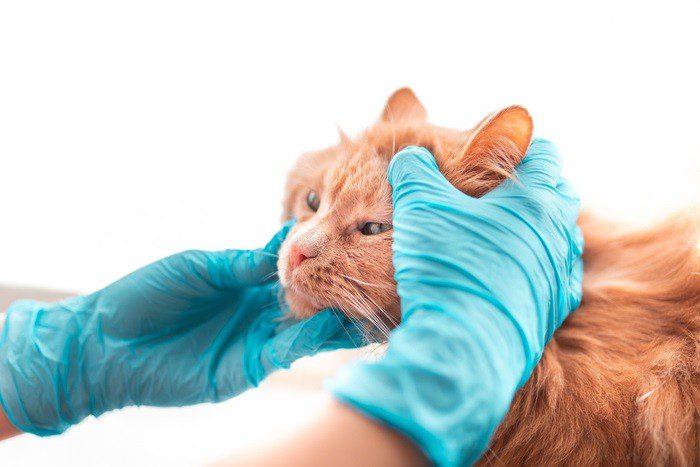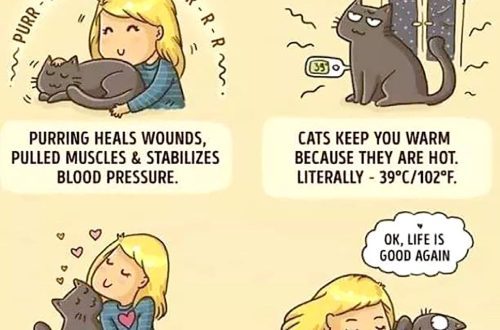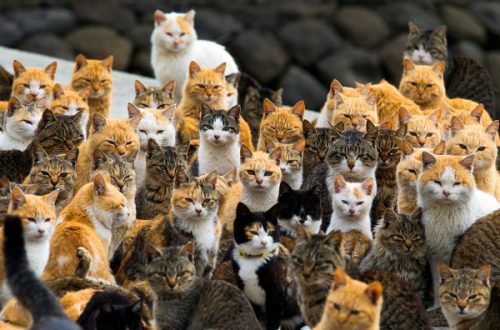
Anemia in cats: causes, symptoms, treatment
Contents
Causes of the disease
Different groups of factors can lead to anemia in cats: those associated with blood loss, causing the breakdown of red blood cells, and reducing the production of red blood cells. Among the most common reasons are:
- injuries leading to internal bleeding;
- neoplasms of various nature;
- diseases caused by external and internal parasites;
- autoimmune diseases;
- poisoning with toxic substances;
- chronic diseases of internal organs;
- leukemia;
- feline immunodeficiency.
An unbalanced and nutrient-poor diet is also a cause of anemia in cats.
Types of anemia in cats
There are several classifications of anemia in cats. So, depending on the rate of recovery of erythrocytes, non-regenerative and regenerative anemia are distinguished. In the first case, the bone marrow does not cope with its task of producing red blood cells – it does not have time to restore their normal number. This may be due to diseases of the bone marrow or a very high rate of cell decay. In the second case, the equilibrium is restored within a certain time.
Due to development, the following types of pathology are distinguished:
- posthemorrhagic – develops as a result of acute or chronic blood loss;
- hypoplastic – the result of a violation of the functions of the hematopoietic organs (insufficient production of new red blood cells);
- aplastic – a sharp decrease in the content of blood cells, including red blood cells;
- iron deficiency – a type of nutritional anemia (alimentary), characterized by iron deficiency due to its insufficient intake with food or poor digestibility;
- infectious – the destruction of red blood cells occurs as a result of the action of pathogenic microorganisms;
- hemolytic – simultaneously enhanced destruction and formation of red blood cells with a predominance of the first;
- renal – develops against the background of chronic renal failure (chronic renal failure).
Due to the large number of causes of anemia, only a veterinarian can determine how to treat the pathology after a preliminary examination of the animal.
Symptoms of the disease
Since the destruction of red blood cells and the subsequent oxygen starvation of tissues occurs quickly, signs of anemia become noticeable almost immediately. Symptoms of anemia include:
- dyspnea;
- tachycardia;
- hypotension;
- apathy;
- dilated pupils;
- change in the color of the mucous membranes (pale, cyanotic, yellowish);
- lethargy;
- deterioration of the condition of the coat;
- lack of appetite;
- cat eating chalk, stones, paper and other inedible objects;
- impaired stool;
- low body temperature.
With severe anemia, the cat may lose consciousness.
Since the listed symptoms also occur in other diseases, it is necessary to diagnose anemia in cats only in the clinic using laboratory methods.
Diagnosis of anemia
To diagnose anemia in cats, laboratory blood tests are performed – general and biochemical. They determine the level of hemoglobin, the number of blood cells (erythrocytes and others), the leukocyte formula and other parameters. At the same time, differential diagnostics of infectious diseases, diseases of the blood, and the endocrine system are carried out.
Blood and urine tests make it possible to assess the work and condition of internal organs, the activity of metabolic processes. Since helminthiases can be the cause of anemia, you may need to donate feces for parasite eggs. In addition, parasites are able to penetrate into the blood, as the result of an appropriate study will tell.
If the doctor suspects that anemia is related to the work of the bone marrow, the pet will be prescribed a biopsy. A special needle will take a sample of the bone marrow from the animal, the analysis of which will provide important information about the presence or absence of pathologies.
If there is an assumption about the presence of internal bleeding, an ultrasound will be prescribed. And if you suspect viruses, first of all, you will need to be tested for the feline immunodeficiency virus and leukemia.
Treatment of anemia in cats
It is unacceptable to treat a cat for anemia on its own! The owner can give the pet iron-containing preparations, and at that time he has a viral or parasitic disease, or there is chronic blood loss.
It is necessary to be prepared for a long, complex treatment and a long recovery period. Therapy for anemia in cats, especially in severe cases, is carried out individually, based on diagnostic data. During the treatment period, repeated tests may be required to track the dynamics of the pathology and, if necessary, adjust the scheme. There are no drugs that could normalize the process of hematopoiesis in a short time.
Your veterinarian may prescribe the following treatment regimen:
- droppers to replenish blood volume;
- medicines in the presence of concomitant diseases;
- detoxification measures;
- recovery of the body after hypoxia;
- diet correction;
- vitamin preparations.
How effective the treatment will be depends on many factors: the causes of anemia, the age of the animal, the duration of the pathological condition. If the provoking factor was viral diseases, autoimmune pathologists, malignant tumors, the prognosis may be unfavorable. In any case, it is important to detect symptoms in time and deliver the animal to the clinic for examination.
In some situations, surgery may be required, for example, with internal bleeding or bone marrow pathologies. Sometimes a cat is left in a hospital for further observation and emergency veterinary care – if the prognosis for the development of the disease is unfavorable.
What medications are prescribed
Among the therapeutic prescriptions for anemia, there may be drugs of different groups:
- antiviral;
- antibacterial;
- means for detoxification, sorbents;
- anthelmintic;
- hemostatic;
- hepatoprotectors;
- supporting kidneys;
- immunosuppressants (for autoimmune disorders);
- vitamin and mineral complexes and others.
Preparations containing iron are indicated only at the end of the main treatment.
Diet for anemia in cats
A mandatory item in the therapeutic regimen for anemia is diet. To eliminate the consequences of the pathology and speed up recovery, you will need to revise the pet’s diet. For control, it is advisable to periodically donate blood for analysis.
To raise the level of hemoglobin in the body of a cat, you can use the following products:
- by-products;
- red meat;
- sea fish;
- bran from wheat;
- tomatoes;
- spinach.
Tomatoes, spinach and bran can be chopped and mixed with meat components. You can do the same with vegetables – even if the cat does not eat pumpkin, zucchini and bell pepper, then it is enough to chop them with a blender and gradually add them to the main food.
It would be nice to solder your pet with decoctions of berries that increase hemoglobin. If the cat does not want to drink them voluntarily (most likely it will), you can give a decoction from a syringe several times a day.
Some mustachioed pets love young sprouts. Sprouted wheat is an excellent tool for enhancing and strengthening the immune system, removing toxic metabolic products, improving the composition and properties of the blood.
If the pet is accustomed to purchased food, as a rule, in each line there are specially selected formulations for sick, exhausted animals. However, it should be borne in mind that changing the type of feeding or brand of food can lead to gastrointestinal upset, so it is best to consult with your veterinarian beforehand.
Why is anemia dangerous in cats?
Deficiency of hemoglobin and / or red blood cells leads to hypoxia of the body – a state of insufficient supply of oxygen to cells. As a result, the functions of all organ systems are disrupted. If anemia is diagnosed in a pregnant cat, her kittens may die in utero or be born weak or even dead. The cat itself may not be able to bear pregnancy or childbirth, and die.
Hypoxia of organs can provoke the development of insufficiency – heart, kidney, liver, and so on. Untimely access to a doctor and ignoring the symptoms of anemia can cause failure of internal organs, death. If the owner is slow to contact a specialist, even after recovery, the animal may experience various symptoms associated with irreversible changes in tissues during hypoxia, for example, in the brain, kidneys, and heart.
preventive measures
The main measures for the prevention of anemia in cats include compliance with favorable conditions of detention. It includes:
- full nutrition, periodic introduction of dietary supplements into the pet’s diet (if necessary);
- regular treatment of the cat with antiparasitic agents (external and for internal use);
- vaccination according to the schedule;
- avoiding contact of a pet with street animals;
- quality control of feed mixtures, selection of a reliable manufacturer to prevent the presence of poisons in food;
- exclusion of self-administration of medications to the pet;
- storage of hazardous and toxic substances in a place inaccessible to the animal;
- ensuring the security of the premises, for example, installing protective nets on the windows.
And, finally, a preventive effective remedy is a periodic visit to the veterinary clinic – at least once a year. Blood, urine and feces tests will clearly show changes in the body, which will allow you to quickly and effectively cope with the disease.





